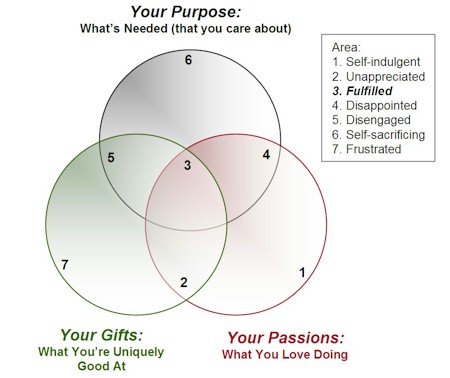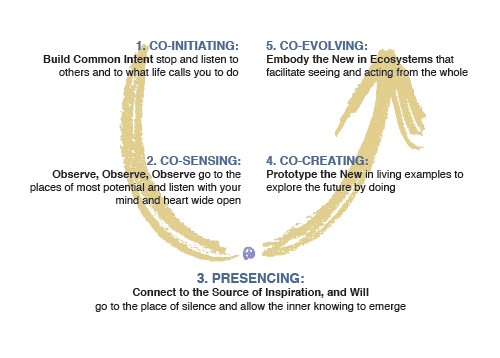 This morning I listened to two fans of the Saskatchewan Roughriders (Canadian Football League) talk about how they had supported their team for forty years despite the fact it had only won the Grey Cup twice in all that time. This morning I listened to two fans of the Saskatchewan Roughriders (Canadian Football League) talk about how they had supported their team for forty years despite the fact it had only won the Grey Cup twice in all that time.
It reminded me of my experience as a young child going to football games with my father. He organized a bus that picked up about 30 fans from the area of Winnipeg in which we lived, drove us to the game and then back home again afterwards. I would often fall asleep on the bus on the way home, but I loved every moment of this experience, even though I wasn’t much of a football fan. I knew all the players’ names by heart, however. In the winter seasons I would watch all the Montreal Canadiens hockey games, in black and white on TV Saturday nights, since we had no local professional hockey team in Winnipeg. Because of the time difference we would never see the first period, since it would have interfered with the dinnertime CBC news, which was sacrosanct. My walls were covered with black-and-white photos of Les Habitants best players like Boom Boom Geoffrion and Rocket Richard, most of them signed by the stars themselves. My parents were forced to buy hundreds of boxes of teas and dessert mixes so I could get the treasured plastic Hockey Coins inside, each depicting one of the 120 active players in the NHL at that time. In my adult years I ceased to be a sports fan, preferring to play rather than watch, and while I still partake of hockey playoff pools, I rarely watch sports of any kind. I briefly cheered on the Toronto Blue Jays during their two back-to-back World Series championships, and got to know all the players then, but a year later they were all but forgotten. For all kinds of reasons I am boycotting the corrupt freakshow propaganda circus called the Olympics, this and every year. I’ve tried to figure out why I watched sports, and why so many still do, but it’s hard to fathom. Although for many Americans (and Chinese) winning seems to be everything, fans in most of the rest of the world seem to enjoy the sport no matter who wins. The endless kitsch of propagandist Hollywood movies where American (“Yoo-Ess-Ay!”) team X or individual athlete Y overcomes staggering odds to become the champion (at the last moment, when all seems lost), and in the process he/they find true love, just makes me nauseous. (When the underdog-turned-champ is a Canadian, or a furry animal, it’s no better.) There is something at work here besides insecure nationalistic vicarious competitiveness. Why do we watch sports? I started paying attention to my own occasional spectator behaviour. I noticed that I was more attentive when “my” team was on offense than when they were on defense. After the game I felt the same no matter which team or individual won, unless there was some cruel injustice served up by cheaters or corrupt or inept officials, in either team’s favour, in which case I was sullen. The Hollywood movies play on this relentlessly, of course, since it’s a cheap way to stir up audiences. Hollywood does the same in the endless and banal “women as victim” movies, which are essentially identical to the sports propaganda movies except they involve women losers-turned-victors instead of men, and take place in homes and courtrooms instead of arenas. But when it was just a game, and I somehow got caught up in it, it was a wonderful feeling at the end of the event (barring having to face terrible traffic going home). The more I thought about it, the more I concluded that we love to watch sports for two reasons that have nothing to do with competition:
Alas, in the context of ‘professional’ sports all of this comes at a major cost. Propagandists (from political thugs to opportunist corporatist advertisers) have exploited sports to the point of ruin, and disgust. Ticket prices for professional teams are obscene, relegating all but the elite who can tax-deduct them to the bleachers and TV screens. Most professional sports are replete with cheaters (drug users — performance-enhancing and pain-numbing — and judge bribers), bullies, and arrogant hacks both on the field and in the media. To come second is a disgrace, the media tell us — heads should roll. And the health and fitness level of sports watchers who would never dream of actually playing a sport is abysmal. The solution, I think, is to find entertainments that provide us with the opportunity for affinity and to develop an impressive expertise, that are not competitive. That is, entertainments (like ballooning, hiking, and theatre-going — other than to theatres that show the aforementioned Hollywood schlock) in which there are no winners and losers, only good, enjoyable performances and those that could be improved (and we’re all armchair critics) and which, most importantly, are participative, both for our health and for our level of social and intellectual engagement. I keep saying we need to re-learn to entertain ourselves. We suffer from a dreadful imaginative poverty in our modern world. We are unfit, both physically and in our creative and critical thinking capacity. For all our information sources, we are appallingly ignorant about history, geography, the arts, science, and what is going on in the world. And we are fiercely, unnecessarily and destructively competitive. From now on, every time I am tempted to watch a “spectator sport”, or a mass media information or entertainment production, I am going to stop myself and ask: What could I be doing instead that is more collaborative, and more participative, and take myself off the sidelines and out of the chair and into action, doing something, cooperatively, with others. I hope you will too. There is a difference between entertainment and fun, and we’re buying far too much of the former and taking part far toolittle in the latter. Category: Our Culture
|
Navigation
Collapsniks
Albert Bates (US)
Andrew Nikiforuk (CA)
Brutus (US)
Carolyn Baker (US)*
Catherine Ingram (US)
Chris Hedges (US)
Dahr Jamail (US)
Dean Spillane-Walker (US)*
Derrick Jensen (US)
Dougald & Paul (IE/SE)*
Erik Michaels (US)
Gail Tverberg (US)
Guy McPherson (US)
Honest Sorcerer
Janaia & Robin (US)*
Jem Bendell (UK)
Mari Werner
Michael Dowd (US)*
Nate Hagens (US)
Paul Heft (US)*
Post Carbon Inst. (US)
Resilience (US)
Richard Heinberg (US)
Robert Jensen (US)
Roy Scranton (US)
Sam Mitchell (US)
Tim Morgan (UK)
Tim Watkins (UK)
Umair Haque (UK)
William Rees (CA)
XrayMike (AU)
Radical Non-Duality
Tony Parsons
Jim Newman
Tim Cliss
Andreas Müller
Kenneth Madden
Emerson Lim
Nancy Neithercut
Rosemarijn Roes
Frank McCaughey
Clare Cherikoff
Ere Parek, Izzy Cloke, Zabi AmaniEssential Reading
Archive by Category
My Bio, Contact Info, Signature Posts
About the Author (2023)
My Circles
E-mail me
--- My Best 200 Posts, 2003-22 by category, from newest to oldest ---
Collapse Watch:
Hope — On the Balance of Probabilities
The Caste War for the Dregs
Recuperation, Accommodation, Resilience
How Do We Teach the Critical Skills
Collapse Not Apocalypse
Effective Activism
'Making Sense of the World' Reading List
Notes From the Rising Dark
What is Exponential Decay
Collapse: Slowly Then Suddenly
Slouching Towards Bethlehem
Making Sense of Who We Are
What Would Net-Zero Emissions Look Like?
Post Collapse with Michael Dowd (video)
Why Economic Collapse Will Precede Climate Collapse
Being Adaptable: A Reminder List
A Culture of Fear
What Will It Take?
A Future Without Us
Dean Walker Interview (video)
The Mushroom at the End of the World
What Would It Take To Live Sustainably?
The New Political Map (Poster)
Beyond Belief
Complexity and Collapse
Requiem for a Species
Civilization Disease
What a Desolated Earth Looks Like
If We Had a Better Story...
Giving Up on Environmentalism
The Hard Part is Finding People Who Care
Going Vegan
The Dark & Gathering Sameness of the World
The End of Philosophy
A Short History of Progress
The Boiling Frog
Our Culture / Ourselves:
A CoVid-19 Recap
What It Means to be Human
A Culture Built on Wrong Models
Understanding Conservatives
Our Unique Capacity for Hatred
Not Meant to Govern Each Other
The Humanist Trap
Credulous
Amazing What People Get Used To
My Reluctant Misanthropy
The Dawn of Everything
Species Shame
Why Misinformation Doesn't Work
The Lab-Leak Hypothesis
The Right to Die
CoVid-19: Go for Zero
Pollard's Laws
On Caste
The Process of Self-Organization
The Tragic Spread of Misinformation
A Better Way to Work
The Needs of the Moment
Ask Yourself This
What to Believe Now?
Rogue Primate
Conversation & Silence
The Language of Our Eyes
True Story
May I Ask a Question?
Cultural Acedia: When We Can No Longer Care
Useless Advice
Several Short Sentences About Learning
Why I Don't Want to Hear Your Story
A Harvest of Myths
The Qualities of a Great Story
The Trouble With Stories
A Model of Identity & Community
Not Ready to Do What's Needed
A Culture of Dependence
So What's Next
Ten Things to Do When You're Feeling Hopeless
No Use to the World Broken
Living in Another World
Does Language Restrict What We Can Think?
The Value of Conversation Manifesto Nobody Knows Anything
If I Only Had 37 Days
The Only Life We Know
A Long Way Down
No Noble Savages
Figments of Reality
Too Far Ahead
Learning From Nature
The Rogue Animal
How the World Really Works:
Making Sense of Scents
An Age of Wonder
The Truth About Ukraine
Navigating Complexity
The Supply Chain Problem
The Promise of Dialogue
Too Dumb to Take Care of Ourselves
Extinction Capitalism
Homeless
Republicans Slide Into Fascism
All the Things I Was Wrong About
Several Short Sentences About Sharks
How Change Happens
What's the Best Possible Outcome?
The Perpetual Growth Machine
We Make Zero
How Long We've Been Around (graphic)
If You Wanted to Sabotage the Elections
Collective Intelligence & Complexity
Ten Things I Wish I'd Learned Earlier
The Problem With Systems
Against Hope (Video)
The Admission of Necessary Ignorance
Several Short Sentences About Jellyfish
Loren Eiseley, in Verse
A Synopsis of 'Finding the Sweet Spot'
Learning from Indigenous Cultures
The Gift Economy
The Job of the Media
The Wal-Mart Dilemma
The Illusion of the Separate Self, and Free Will:
No Free Will, No Freedom
The Other Side of 'No Me'
This Body Takes Me For a Walk
The Only One Who Really Knew Me
No Free Will — Fightin' Words
The Paradox of the Self
A Radical Non-Duality FAQ
What We Think We Know
Bark Bark Bark Bark Bark Bark Bark
Healing From Ourselves
The Entanglement Hypothesis
Nothing Needs to Happen
Nothing to Say About This
What I Wanted to Believe
A Continuous Reassemblage of Meaning
No Choice But to Misbehave
What's Apparently Happening
A Different Kind of Animal
Happy Now?
This Creature
Did Early Humans Have Selves?
Nothing On Offer Here
Even Simpler and More Hopeless Than That
Glimpses
How Our Bodies Sense the World
Fragments
What Happens in Vagus
We Have No Choice
Never Comfortable in the Skin of Self
Letting Go of the Story of Me
All There Is, Is This
A Theory of No Mind
Creative Works:
Mindful Wanderings (Reflections) (Archive)
A Prayer to No One
Frogs' Hollow (Short Story)
We Do What We Do (Poem)
Negative Assertions (Poem)
Reminder (Short Story)
A Canadian Sorry (Satire)
Under No Illusions (Short Story)
The Ever-Stranger (Poem)
The Fortune Teller (Short Story)
Non-Duality Dude (Play)
Your Self: An Owner's Manual (Satire)
All the Things I Thought I Knew (Short Story)
On the Shoulders of Giants (Short Story)
Improv (Poem)
Calling the Cage Freedom (Short Story)
Rune (Poem)
Only This (Poem)
The Other Extinction (Short Story)
Invisible (Poem)
Disruption (Short Story)
A Thought-Less Experiment (Poem)
Speaking Grosbeak (Short Story)
The Only Way There (Short Story)
The Wild Man (Short Story)
Flywheel (Short Story)
The Opposite of Presence (Satire)
How to Make Love Last (Poem)
The Horses' Bodies (Poem)
Enough (Lament)
Distracted (Short Story)
Worse, Still (Poem)
Conjurer (Satire)
A Conversation (Short Story)
Farewell to Albion (Poem)
My Other Sites



 It is hard to imagine that the US doesn’t have a plan to annex Canada. A nation that has no hesitation in trumping up charges against a country half a world away when it is perceived to threaten its energy security, and then bombing the hell out of it, killing and injuring hundreds of thousands of civilians and utterly destroying its infrastructure and social fabric, would not think twice about seizing control of a nation that offers it even more (and whose animosity would severely threaten its national interest).
It is hard to imagine that the US doesn’t have a plan to annex Canada. A nation that has no hesitation in trumping up charges against a country half a world away when it is perceived to threaten its energy security, and then bombing the hell out of it, killing and injuring hundreds of thousands of civilians and utterly destroying its infrastructure and social fabric, would not think twice about seizing control of a nation that offers it even more (and whose animosity would severely threaten its national interest).













